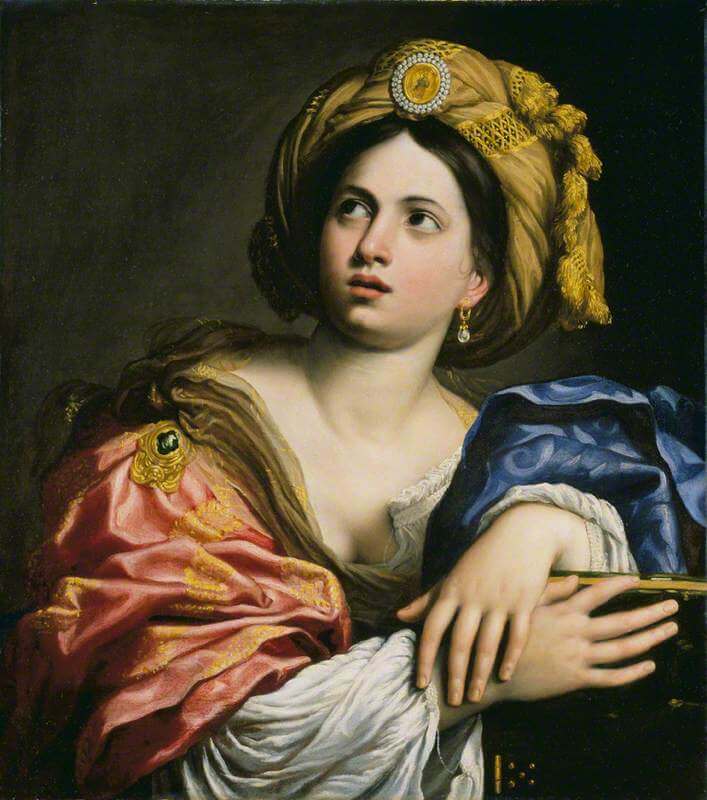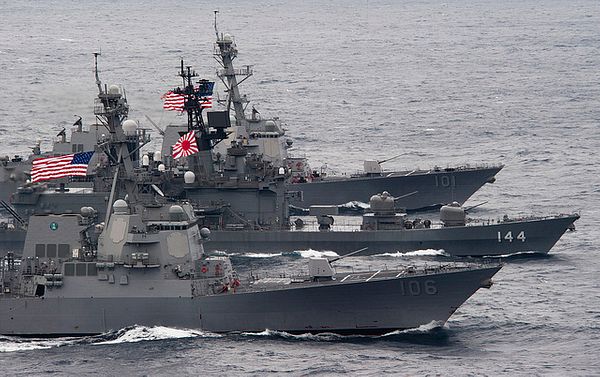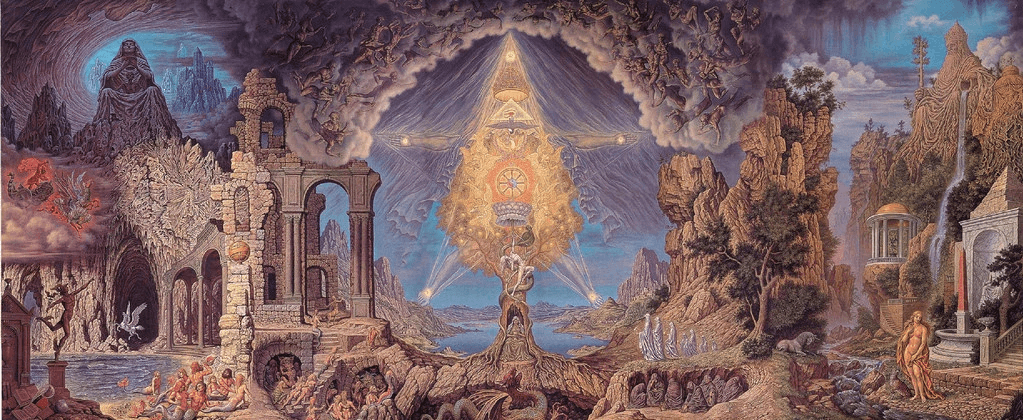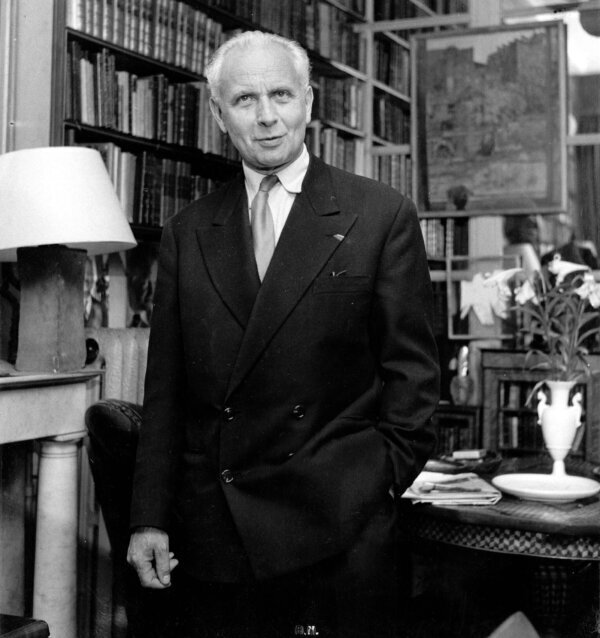True Painting and the Problem of Imitation

There is a categorical rift between classical and modern (progressive or avant-garde) painting, for modern painting as such ceases to be “imitation of nature” in the classical sense of the expression, by splitting mechanically two complementary poles: our feeling (or subjective experience) of things and the (objective) concept we forge of things. A historical dialectic unfolds out of these two Cartesian poles, or based on the modern-Machiavellian value/fact distinction.
What kind of painters should we privilege: the classical or the modern? Is it possible to return to classical painting in our hyper-modern age? If so, what steps would a student of painting need to take to become a classical painter? First questions first, however: how are we to interpret or understand classical painting?
The currently dominant response to our open question points to “techniques” and quantifiable criteria kindred to those that Robert Williams, in the role of Mr. Keatings, has his students reject entirely (if only in the name of sentimental compulsions) in the 1989 film, Dead Poets Society. Our “historical consciousness” drives us to reconstruct the past “scientifically” or positivistically and so attempt to revive the feeling of the past–the “subjective” element of our classics, here—beginning from an ordering (or re-ordering) of its genesis. In the case of classical painting, we begin examining its “objective” conditions, including the technical criteria and rules of the trade, mastery of which is supposed to lead to the final product: a classical masterpiece. Not unlike Mary Shelley’s Dr. Frankenstein, we work to convert the inanimate into something animate, under the tacit assumption that the good artist is a deus ex machina. Recreation, rather than original creation, is our goal; imitation of art, not of nature.
As modern(ist) painters we seek expertise in the way inert matter can be converted into a product of human creativity. It is not enough for us to create; we are now responsible for examining the manner in which matter is transformed into a product of art. We are to be critical creators, creators conscious of what they are doing, or masters of the technique or method breaching the gap between a material “state of nature” and artifacts loosely understood as products of human ingenuity. Art would then be based on science; our savoir-faire on our knowledge of principles conceived in technical, even mechanical terms.
Modernist painters have learned to reconstruct classical painting scientifically. They have learned to grasp the genesis of the classical masterpiece in mechanistic terms; they have mastered the path that leads from value-free “facts” to concrete or “historical” (and priceable) values, values as products of human creativity. The appeal to abstract, a-historical values is discouraged as anachronistic distraction from direct engagement with material to be transformed into concrete, objective value: a precious artifact. The “concept” that for Hegel is key to any genuine understanding of art, is now seen as “enemy” of art. While for Hegel the concept (Begriff) evolves by being negated constructively in the context of a historical dialectic, for the post-Hegelian, post-philosophical artist (who has traded the Reason of History for History’s absurdity) the concept is a mere “literary abstraction” constituting an obstacle for the practice of art. Thus, today, artists seek emancipation of feelings from any overarching, guiding principle, which is thereby necessarily replaced by concern with special techniques. In departing from, or more precisely abandoning, the guiding principle of classical painting, modern(ist) painting no longer seeks guidance within nature, “finding” it rather outside of natural spontaneity. For natural spontaneity has seen conceived in terms of mere sentiment/feeling devoid of intelligence. The intelligence formerly sought as latent in nature is now supposed to be supplied by an intelligence imposed upon nature. Meaning—and so, too, value and order—in nature is supposed to be replaced by historical meaning, or meaning that nature acquires as it is transformed by a technique evolving out of nature.
With respect to the origin or proper nature of painting—thus to what painting is in and of itself—modern painting cannot but be an impostor. Painting as such ceases to be true where it is shut to the inherent or natural value of facts and thus where it rejects a natural hierarchy of ends. The painter who regards facts as devoid of natural value is an impostor. Classical painting is necessarily “imitation of nature” in the sense that it is not merely the (re)production of pleasing beauty, but the mirror of truth, which includes both the beautiful and the ugly, both pleasure and pain, both light and darkness (not as merely-visual, but primarily spiritual properties). The imitation of nature presupposes that nature is a model to look up to; that it has inherent value. The imitation is not merely “objective,” or “extrinsic” and thus mechanical: in imitating nature, the true or classical painter follows in nature’s footsteps, accessing nature’s own Way. He does not consider nature from any “viewpoint,” if not entirely accidentally. He ceases to approach nature in a vulgar manner, or as ordinary non-painters do.
Becoming a painter—a true painter—involves a perceptive conversion whereby we cease looking at our model from without it, by giving or exposing ourselves entirely to it, so that it may live within us. There is, in this respect, no activity that is more compassionate than painting. For the painter must let his model live in him.
This is not to say that the painter is to reduce the alterity of the model to himself, but that he must die to the model, allowing the model—its movement and character (way and manner)—to “possess” him, to speak in him. All the painter achieves is, properly speaking, the work of the dead, an otherworldly work involving the exposure of nature to its eternal fulfillment. In other words, the painter is to seek the permanent truth or original meaning of nature.
Now, in the modern world, the essential telos or “way” of the painter is obscured where the hidden is manifested and truth discovered as the final synthesis of the beginning (nature) and its discovery (historical man). Old paintings are replaced by images that, strictly speaking, don’t mean anything (in themselves). Their meaning being defined by their viewers, the images ultimately belong to the sphere of advertisement, or propaganda—of pretense, rather than pure, heroic contemplation; of ideology, rather than of impersonal, disinterested devotion; of self-indulgence, rather than of pious reverence. There being no question of relating physical nature to divine/divined, hidden nature, or the profane to the eternally sacred, now the profane is raised to the status of the sacred rendering old painting anachronistic at best, or else outrightly blasphemous. Why, today it would appear preposterous for painting to consciously reject the new imperative to incorporate the sacred in the profane through an effort at unqualified, uncompromising divulgation—the rendering-vulgar of holiness, the reduction of spontaneity to pressing compulsion. Divulgation is supposed to overcome the aristocratic impulse of mystics, just as the imitation of nature is to be construed as (mechanical) assimilation of nature into a machine, consummate form of all mechanical appropriation. But the machine that no longer presupposes a natural, permanent support is what we call technology, the proper work of which consists in appropriating its natural support to produce a new one for itself, one onto which technology can be terminally “at home”. For the new support is at once the Mecca in which technology can look at itself as God, creator of its own world.
The new creator can virtually create “directly from itself” or ex nihilo, insofar as it can pretend, within the sphere of its virtual world, to have overcome natural mediation. Nature is not overcome, however, but merely obscured vis-à-vis its transcendent dimension: nature’s presence is acknowledged as that of mere fuel. Such is the concession that the new painter-as-advertiser is compelled to make as he attends to his designated enterprise, thereby replacing old contemplative painting with a new one dedicated to a “shock and awe” effect compensating for the death of nature’s hidden God.
Notwithstanding his posturing as absolute creator, the painter producing a work of art as commodity devoid of inherent value as opposed to mechanically attributed or quantifiable value, imitates a certain notion of nature as soulless res extensa. The violence of a nature constrained within the laboratory of modern History is mirrored in the violence of a new painting shutting the door to all thoughts of transcendence. The new painting is supposed to confirm the practical irrelevance of metaphysical questions for ethics, or the erasure of dialogue between the divine and the human. Instead of serving as a window to the Beyond, the new painting stands as a Wall justifying a life shut to any Beyond. The new painting is then conveying a salient massage: freedom can truly thrive only upon the death of God—of the living or dangerous God that questions all human certainties, and that is after all the First Question.
How does the modern reading of freedom inform the “training” of the painter? The painter no longer looks upon Old Masters as models to emulate, but as material to use on the way to creating the New in a world of News. Only what is eminently new deserves a place in our New World, the order devoted to the new as a present-beyond-past, a present escaping from all relapse into the past by no longer receiving the future as gift, but building it through continuous struggle, re-conceiving the future as the product of the new present. The new present, then, goes hand in hand with a new future, while the past—the old, the receding—lingers as mere-danger justifying our flight from it.
What is “dangerous” about Old Masters? The “delusion” of otherworldliness, their “aristocratic spirit,” their appeal to ends ostensibly irrelevant to our new world, our world of newness. The Old Masters harken to the eternity that we, now, look down upon as a historically-determined obstacle to enlightenment, to emancipation, to our being-our-power, our being all that we can be. In order to be what we can be, in order for us to convert our being into outright power, we must become utterly disenchanted in the face of the problem of eternity. Eternity as Other vis-à-vis our existence cannot but be an illusion produced by beings unintegrated in the flux (be it a march, a race, or a flight) of History. That flux is all that really counts, all that is “relevant,” where relevance is all that really counts. Relevance to what? To the flux itself, to be sure; relevance to the apotheosis of the new, to the flux that escapes death in a present building its own future and that becomes the future, the future as truth about the present: creativity unbound.
What happens here to the notion of a historical ascent to the future, the notion of historical progress? Upon the liberation of the present from the mirage of eternity, or where the present “realizes” itself as the building of eternity in terms of The Future, time no longer advances, but expands as space: it “colonizes,” or appropriates Otherness as meaningless extension. The linear trajectory of History is replaced by the “circular” one of Geography. Historical time converts into mythical time, the horizon of a new imagination cut off from any “pre-historical” or metaphysical eternal being.
There is no more historical time, today, insofar as “the today” merely replicates or reproduces itself by creating and entering into its own tomorrow. The tomorrow emerges as the mark of the expansion of the today, the perpetuation of the new, of news as consummate form of compulsion; a form nourished strictly by our compulsions, as these gather fatherless on our post-metaphysical landscape.
What has occurred here? The classical rootedness of artistic creation in natural generation has been overturned, whereby a new art is supposed to serve as foundation of all generation; whence the establishment of a new spontaneity on the basis of cunning. The classical secret underpinning the distinction between nature and art is replaced, or rather eclipsed by a new synthesis of nature and art. This is the heart of the modern project: recreating nature as a function of art, generation on the basis of creativity (a new “post-metaphysical” one, to be sure).
Throughout the Middle Ages we are reminded of divine or primordial creation through an intellective act in which eternal being transports itself entirely, so that creation is essentially intellective, or ordered meaningfully as a determination signifying the absolute indetermination of eternal being. This is to say that creatures or created beings (entia) mean something in an innate sense; they are inherently or essentially meaningful. Now, in the modern context, the classical “Platonic” notion of created beings having an inherent meaning is rejected in favor of perspectivism, which is a doctrine or attitude on account of which meaning is always extrinsic or relative to an outside viewer. Meaning is supposed to arise a posteriori, as a “symbolic attribution” that allows us to make use of things. On this view, “things”—or the discrete content of our everyday life experience—are not originally created; instead, they are generated in a material or irreducibly-mediated manner. The physical universe simply comes into being; it emerges, or evolves. Where does this leave us, agents of moral and conceptual attributions? Man is supposed to be endowed (through material evolution) with the power to invent or create meaning as form in which matter can fit to serve our needs ad hoc, or in an expediential manner. We are supposed to survive or affirm our lineage by gathering physical motion into forms we create seemingly ex nihilo.
What we have here is a variant of Medieval nominalism, or the notion that words do not mean things themselves, in the respect that they are (supposed to be) merely free-floating attributions that help us cope with otherwise meaningless things. Modern nominalism “upgrades” its Medieval predecessor by supplementing it with the notion that our conceptual and moral attributions are not merely useful to cope with an effectively Godless world; those attributions can help us transport “matter” into the creation of a new world of symbolic “things,” where we can pretend that we are the creators of generation, insofar as we experience generation on a technical platform.
In the modern world of symbolic experience, we stand as guardians, guarantors, even saviors of nature, for we are supposed to be the creators of nature’s forms. These “symbolic forms” are supposed to give meaning to and in this sense “create” nature by defining matter’s identity; so what we now call nature comes to presuppose the forms we attribute to it ex machina, our goal being the transplanting of nature/matter onto the stage of human creativity, or the self-serving impulse by which we attribute meaning to otherwise meaningless things.
In our modern context, where painting is called upon to contribute to the transplanting of nature onto the stage of modern man’s symbolic creations, how can the painter offer his contribution? By reducing all image-production to mechanical procedures, relying, today, as much as possible on neo-Cartesian machines such as our computers. With the unfolding of the modern world, painters are to be gradually replaced entirely by computers and the digital networks falling under the category of “Artificial Intelligence” (A.I.): intelligence grounded, not in eternal being (as is the intellective act generated by God, as per our pre-modern classics), but in unintelligible mechanical forces.
With A.I., intelligence is a superstructure for sheer matter, just as consciousness serves as façade for the unconscious. Free from all pre-modern concerns, A.I. is best positioned to replace old painters, carrying out the formidable task of organizing or formatting the material underpinnings of our experience into formal-digital structures that can replicate our experience abstracted from all obstacles to the terminal consolidation of a technocratic society, or a society that is virtually or symbolically perfectly autonomous or cleansed of metaphysical limitations. Indeed the new “formal” society emerges to posture as its own metaphysical limit, or that above which there is no potentiality.
Falling short of engaging uncompromisingly in radical rebellion to the dictates of modernity, today’s painters are doomed. Any spiritual compromise would not merely compromise painting tangentially; it would nail it to the path of its extinction, where the painter is replaced by a fundamentally unconscious computing machine. But where does “rebellion” begin? It cannot begin from painting, for prior to being painters we are men who are already “contextualized” or “framed” by modern discourse. Modern discourse, its very telos (orientation, articulation and end), is to be countered by a classical speech binding the sensory life, or feeling/sentiment, back to pure intellection, or the marriage of thing and intuition (adæquatio rei et intellectus, to cite a Medieval formula). We need to return to a conception of generation unmediated by human artifices and so to a common sense or imagination unmediated by calculation. Unless the painter returns to a spontaneity presupposed by any and all human deliberation (choice determined a posteriori with respect to the ordinary arising of the contents of experience), he is condemned to allow his sentiment to be mediated/channeled by and fed into our technological Leviathan. Yet, spontaneity is unsustainable without proximate anchorage. Unless we recover a traditional anchorage in ancestral authority and a concomitant sense of gratitude towards our Fathers, we are fated to place our spontaneity in the service of cunning, letting it be manipulated to serve ends alien to it.
In sum, the return to emulation of ancient masters is a sine qua non for any successful resistance to the onslaught of painting, of humanity itself, carried out by the technological Regime. Yet again, successful emulation cannot be mechanical. We must emulate our Fathers, not merely from afar, but by engaging in intimate dialogue with them, by following in their footsteps, by living like them, not in the sense that we should pretend to be like them, but in the sense that we must seek what they sought, reasoning as they reasoned. Their reason having become our own, as well, we will be freed from the fear repressing our natural inclinations, or our natural desire and the feelings constituting its outer shell. Only then will spontaneity flow undefiled towards its proper end or good, so that the flow will be rational without being unnatural.
The discrepancy between the sensory and the purely intellective is accounted for by and in a classical reasoning that was once called “poetic,” as opposed to “scientific-instrumental”. The poetic reason/discourse of pre-modernity (including “medieval antiquity”) stands as proper mediator between the senses and pure intellection. The discrepancy between the two poles corresponds, as our medieval classics show systematically, to the categorical discrepancy between generation and creation. Intellection, we are taught, is born directly of eternal being, retaining its eternal indetermination, whereas physical creation is substantively altered with respect to eternal being; for physical being is determined. As such, it mirrors indefinite being as a sign signifying/signaling, as from another world. While the medieval Platonic doctrine of creation ex nihilo entails the emanation of divine or eternal indetermination into physical/temporal determinations, that emanation is intellective in the respect that it contains its creations as noetic determinations within itself. It is through its “intellective” or providential (from the Latin pro-video) gathering of determinations into their originative indetermination, that divine being emanates determinate beings out of itself. It emanates them, not through (and/or into) a “matter” alien to itself, but through the intellective activity of intelligible forms constituting the veritable content of eternal being itself, or of the primordial sense of being (in this respect, the cradle/womb of creation is eternal being itself, as opposed to any “matter” external to it).[1] What is ultimately the case amounts to “forms of intelligibility,” or “beings of pure intellection”: beings strictly within pure thought or mind. Eternal being is actually-present in physical beings through its intellective “voice,” or in the divine’s act of gathering the physical back into the purely noetic. Through, or rather as Intellect, divine eternal being creates forms that are necessarily open to full intelligibility, never being aside from or outside of intellection. The sensory stands at the margins of intellection, but never outside of it. To stand entirely outside of intellection is simply not to be, or to “fall” into utter negativity. Here we may speak of pure absence of being, or the permanent shadow of the eternal intellective agency of being, that is, of what the forms of things ultimately or originally are.
Eternal being emanates into physical determinations intelligibly, or in the act of making sense of them, of defining them vis-à-vis noetic indetermination, as signs of their original perfection. What mediates the signs and their referent is the intellective/gathering act in virtue of which creation is direct (unmediated) while retaining independence from its source. How is this possible? While the created is other with respect to the creator, the latter determines itself in the physical as a spark or occasion of intellection—a “motivation” to return to itself.[2]
True painting relates to the physical as divine “motivation” to rise back to the divine itself. In the context of the painter’s ascent to the divine as proper cradle of beings, the painter “trains” in bearing witness to the truth about external forms. Forms are not truly merely “external” or “objective,” but “in God,” which is to say that they are primordially or radically intelligible, or open to question. To rise from “opaque” forms to forms transparent to consciousness, this is the essence of painting. Aside from that essence, the painter’s training remains a vain pretense.




